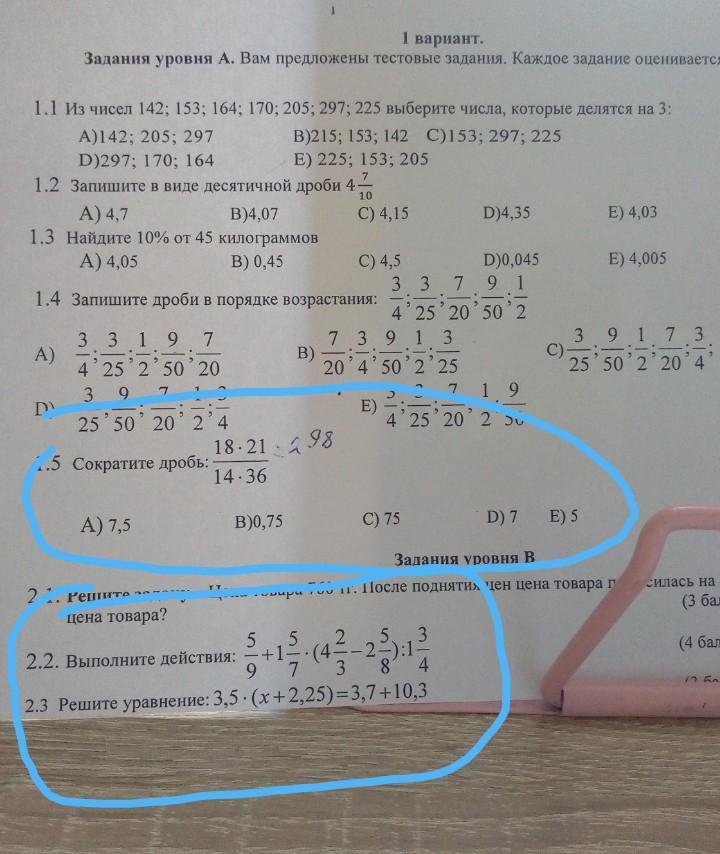Предмет: Математика,
автор: Аноним
помогите пожалуйста разобраться в материалах !!!!! срочно матем
Приложения:

Ответы
Автор ответа:
1
Ответ:
1.5- 3/4 или 0,25
Пошаговое объяснение:
ну я понял это потому что я умный
Автор ответа:
1
Ответ:
1.5. B) 0.75
2.2.
2.3. x=1,75
Пошаговое объяснение:
1.5. первая дробь сокращается на 18, вторая - на 7
2.2.
2.3. 3,5*x+7,875=14
3,5x=6,125
x=1,75
Похожие вопросы
Предмет: Қазақ тiлi,
автор: Gulili
Предмет: Английский язык,
автор: AloysiaTyrell
Предмет: Русский язык,
автор: zarifaaliyeva1
Предмет: Русский язык,
автор: Pro228Pro